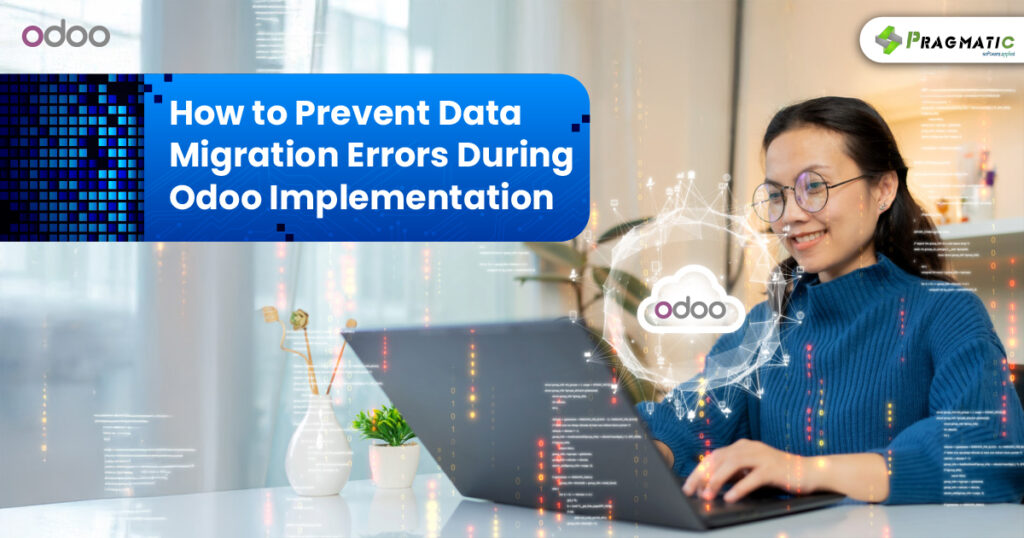

Implementing Odoo 18 ERP can be a game-changer for businesses, streamlining processes and centralizing operations. However, one of the most critical and challenging aspects of the process is data migration. This step forms the backbone of a successful implementation, and errors can lead to data corruption, downtime, or even a failed project.
To ensure a smooth transition, understanding the common pitfalls and effective strategies for data migration is essential. Here’s your practical guide to avoiding common mistakes and getting your Odoo implementation right the first time.
Data migration errors happen for several reasons, often stemming from a lack of preparation, incompatible systems, or simple oversight. Let’s explore the main culprits:
Odoo has specific requirements for how data must be formatted. Legacy systems often use outdated structures or formats, such as different date or numeric styles, which Odoo might not recognize. For instance, migrating data with a date in MM/DD/YYYY format when Odoo requires DD/MM/YYYY can result in errors. This mismatch creates issues like missing data or corrupted records.
If your data is like a puzzle, mapping is the step where each piece is matched to the right place. When this mapping isn’t 100% accurate, critical fields may end up misaligned or missing. For example, if customer data in your old system uses separate fields for city, state, and zip code but Odoo uses one unified address field, improper mapping will cause problems.
Skipping the assessment phase is a common mistake. Outdated, duplicated, or missing data issues tend to compound during migration. Imagine migrating incomplete product details into Odoo—your inventory and sales processes could suffer greatly.
Even with the best software, manual errors can still derail the process. One wrong click, misconfigured script, or missing step could lead to significant delays. For instance, a team member might overwrite live data or assign the wrong relationships between files.
Data migration is resource-intensive and can strain your systems. If too much data is pushed all at once, it could cause your system to slow down or crash. These performance hiccups often lead to skipped records or partial migrations.
The good news? You can avoid most migration challenges by following these proven best practices. Here’s how to keep the process smooth and error-free:
Start with a clear plan. This includes identifying key datasets to migrate, understanding the structure of your legacy systems, and aligning it with Odoo 18.
Think of this step like cleaning your house before moving in. Get rid of duplicates, outdated information, and unnecessary clutter. This ensures only valuable and usable data makes it into your new ERP.
Before finalizing the migration, running test migrations is crucial. Testing provides a preview of potential problems and allows you to fix them.
Backing up your legacy systems ensures you’ll have a safety net if something goes wrong. This can help recover lost or corrupted data swiftly.
Odoo 18 offers built-in data import/export tools, but these may not cover every need. Third-party migration tools and automation scripts can handle more complex processes while reducing manual errors. For example:
Migrating data to Odoo involves complexity, but risks can be significantly reduced with strategic planning and execution. Below is a deeper dive into actionable methods, with examples, to mitigate risks effectively.
What is it?
Instead of transferring all data at once, break the process into smaller, manageable chunks. This helps you isolate and address errors without impacting the entire migration effort.
Why is this important?
How to implement it?
Example:
A retail company splits its product data migration into three phases:
What is it?
Ongoing testing ensures that every step of the migration process works as intended. It helps catch errors such as incompatible formats or misaligned data before they become bigger problems.
Why is this important?
How to implement it?
Example:
An e-commerce company tests its customer data migration by using subsets. It notices that “date of birth” fields are in different formats in the source and target systems. Testing uncovers this before the final migration, enabling the team to correct the issue.
What is it?
Detailed documentation records every step, tool, and issue encountered during the migration process. It acts as a guide for troubleshooting and future migrations.
Why is this important?
How to implement it?
Example:
A manufacturing company logs all their data mapping procedures, along with screenshots of the import/export process. When they revisit the system for upgrades, this documentation saves them repeated manual effort.
A successful Odoo 18 data migration boils down to preparation, attention to detail, and the right team/tools. By addressing potential errors before they occur and following best practices, your ERP implementation will not only go smoothly but will also deliver lasting value to your business.
Leave a Reply
You must be logged in to post a comment.